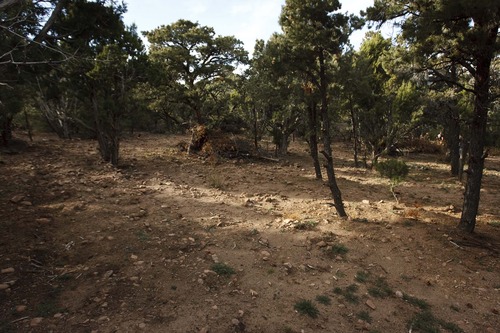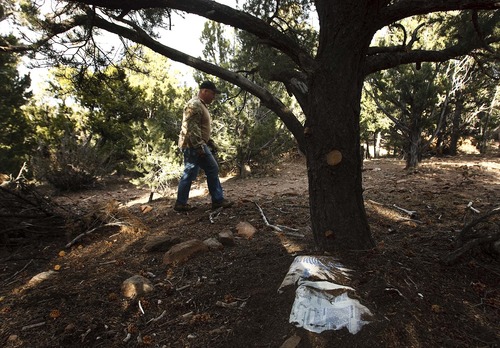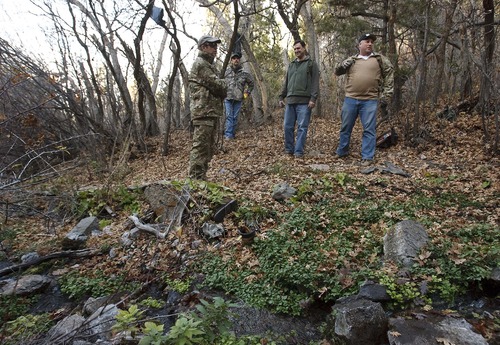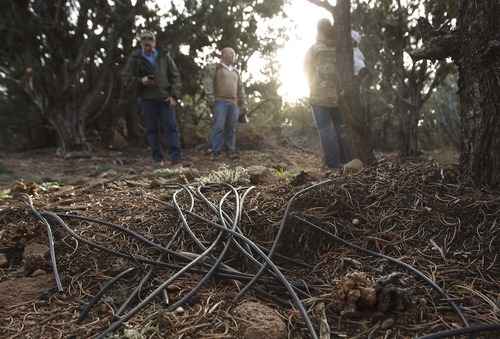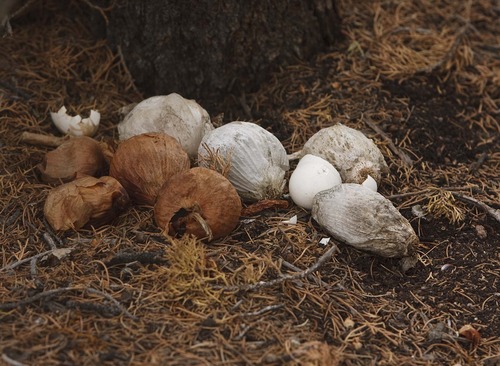This is an archived article that was published on sltrib.com in 2012, and information in the article may be outdated. It is provided only for personal research purposes and may not be reprinted.
Cedar City • Rotting white onions sit underneath a juniper tree. Short pieces of narrow black tubing sit in a clearing.
Two bags of fertilizer are half covered by dirt and pine needles, and a set of work boots lie along a stream nearby. It's trash now. But this summer, the items were used to help grow about 4,200 marijuana plants in this spot on the Dixie National Forest about 10 miles west of Cedar City.
The U.S. Drug Enforcement Administration and local narcotics detectives raided the makeshift marijuana field on July 30, eventually arresting three people. On Thursday, federal and local law enforcement praised such cooperation and said it — along with a drought — has reduced the amount of marijuana grown in Utah.
Figures announced here by the U.S. Drug Enforcement Administration show 13,167 marijuana plants seized from public lands in Utah in 2012. More than five times that amount was seized in 2011.
In 2010, law enforcement seized 106,572 plants in Utah.
"If you grow your crop in Utah, you will face aggressive investigation and prosecution," U.S. Attorney David Barlow said at a press conference at the Washington County Sheriff's Office in Hurricane.
Frank Smith, the DEA's assistant special agent in charge for Utah, acknowledged the drought this year hampered growing, but he also credited investigating the La Familia cartel, which he singled out as the primary grower in Utah.
"We started to realize this is one conspiracy," Smith said.
Rather than just going in and eradicating marijuana when it's found, Smith said, federal agents and local law enforcement will conduct surveillance and identify the growers. One bust of a marijuana field near Toquerville last year resulted in more than 30 arrests.
Kane County Sheriff Lamont Smith said in the past when his office received a tip about marijuana growing, his deputies would investigate it themselves. Now, the sheriff says, his deputies share the information with the DEA and other sheriffs.
What they learned, Lamont Smith said, was the marijuana in southern Utah was being grown by the same cartel and field hands who would communicate with their counterparts in marijuana fields in different counties.
"We know how they work," Lamont Smith said. "We know who we're looking for."
The DEA estimates a plant produces one pound of marijuana with a street value of $2,000 per pound.
After the press conference, law enforcement took reporters on a tour of the former marijuana field west of Cedar City. Brian Bairett, of the Utah State Bureau of Investigation, said a citizen saw something suspicious in the woods and gave law enforcement a California license plate number.
Federal agents and the drug task force that includes Iron, Beaver and Garfield counties started tracking the driver and monitoring the area. Bairett assumes a field worker ran, leaving his work boots behind, when teams of law enforcement raided the field.
"These guys start running like a bear is chasing them," Bairett said.
Mike McKinney, an assistant special agent in charge for the U.S. Forest Service in Utah, pointed to the environmental damage done in the field. Trees were clear cut to make space to plant marijuana and provide sunlight. Piles of branches are ongoing fire and erosion hazards. Pesticides and herbicides were used.
"It's just astronomical the amount of trash they bring in here," McKinney said. "They'll just bury it or leave it."
McKinney said law enforcement cleans most of the trash from the Utah sites while they eradicate the marijuana. Some trash remained scattered around the former field Thursday.
Frank Smith considers the mark of success to be the few number of plants found in Utah in 2012.
"We're going to see a little bit of a spike" in 2013, Frank Smith said. "You have to. But I will tell you we are actively working on intel for next year."
Twitter: @natecarlisle




